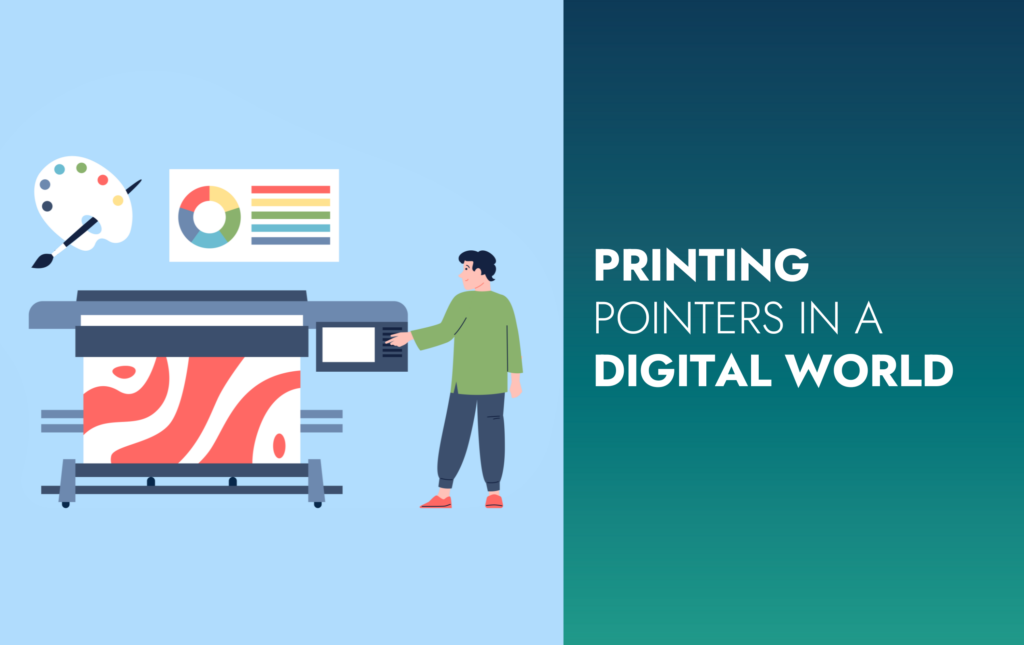In an increasingly paperless world, it may seem like print is taking a backseat to online marketing tactics. However, when done correctly, print materials are a powerful and effective tool in your marketing arsenal. As a content marketing agency with a strong background in publishing, Zahra has learned a thing or two about creating impactful printed materials. Here are some pointers to keep in mind to stand out from the crowd.
1. Define your purpose and audience
Before you even begin the process of designing and printing, it’s important to have a clear understanding of your goals and your target audience. This will help inform the creative direction and ensure that your materials are speaking directly to your intended audience. Knowing the purpose of your print materials – whether it’s to promote a new product, showcase your brand, or provide information – will also aid in creating a cohesive and effective design.
2. Establish your concept
Once you have defined your purpose and audience, it’s time to come up with a strong concept for your print materials. This concept should align with your brand and be engaging and memorable for your audience. It’s important to also consider the format and size of your print materials at this stage, as it can affect the overall impact of your design.
3. Plan and develop your key messages
Printed materials have limited space, so it’s crucial to carefully plan and craft your key messages. Fast-paced lifestyles are now the norm and people don’t have time to read lengthy paragraphs, so make sure your messages are clear, concise, and attention-grabbing. Your key messages should also tie back to your defined purpose and concept.
4. Choose the correct formats, materials, and specs
When it comes to printing, there are endless options for formats, materials, and specs. It’s important to choose the right ones for your specific project to ensure that your materials convey the desired message and withstand the wear and tear of distribution. This comes down to agreeing the ‘gsm’ (grams per square metre) which is the weight of your paper that the printing company will need. For example, a 150gsm flyer is thin and easy to fold or bend, whereas a 250gsm flyer is a lot thicker and takes more effort to fold. Consider the purpose of your materials, your target audience, and your budget when making these decisions.
5. Design the creative and layout
Now it’s time to bring your concept and key messages to life through design. This is where your creativity and attention to detail will shine. Make sure your design is visually appealing, on-brand, and easy to read. Consider the placement of your messages and any images or graphics to ensure a cohesive and eye-catching layout.
6. Prepare for Print with Bleed Marks
Before sending your print materials off to the printer, it’s important to ensure they are prepared correctly. Bleed marks are necessary for a clean and professional finished product, so make sure your designer includes them in your file and sets up your files accordingly.
7. Proof, proof, and proof again!
Before sending your materials off to the printer, make sure you have thoroughly proofread and reviewed every aspect. It’s always helpful to have someone with fresh eyes review the materials as well, as they may catch any errors or inconsistencies that you may have missed. Additionally, make sure your materials are in the correct print-ready format to avoid any delays or errors during the printing process.
8. Select the right printing partner
Choosing the right printing partner is crucial for the success of your print materials. Make sure to do your research and find a reputable and experienced printing company that can meet your specific needs and deliver high-quality prints. A reliable printing partner can also provide valuable insights and suggestions to enhance the overall impact of your materials.

9. Plan your distribution
Once your materials are printed and ready to go, make sure to have a well-thought-out distribution plan in place. This can include mailing them directly to your target audience, displaying them at events, or distributing them through your sales team. Whatever the method, have a strategy in place to ensure your materials reach the right people and make the desired impact.
10. Gather feedback
After your materials have been distributed, it’s important to gather feedback from various sources. This can include your clients, audience members, colleagues, and anyone else who has the opportunity to view your prints. Their insights and opinions can provide valuable information for future printing projects and help improve the overall impact and impression of your materials.
Most of all – have fun with your creations! While digital marketing may dominate the current landscape, print materials have a hugely impactful and vital place in a well-rounded marketing strategy. By following these simple steps and partnering with the right printing company, you can create impactful and effective print materials that will make your brand stand out.
If you would like to discuss any printing requirements you have or would like Zahra’s help with the process please reach out at hello@zahramediagroup.com
















